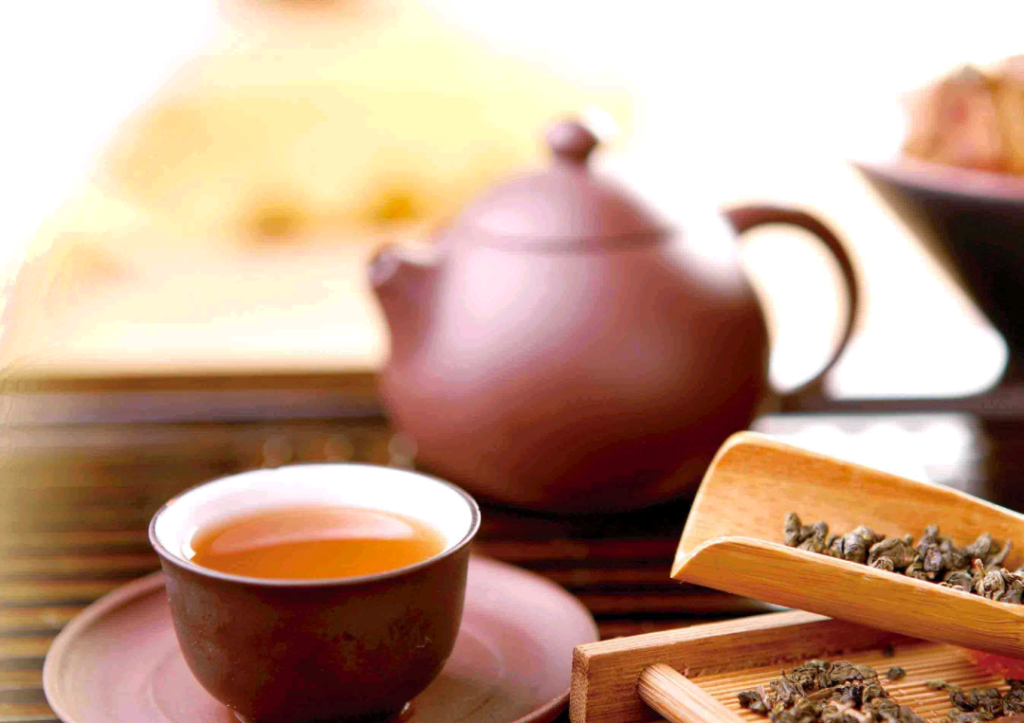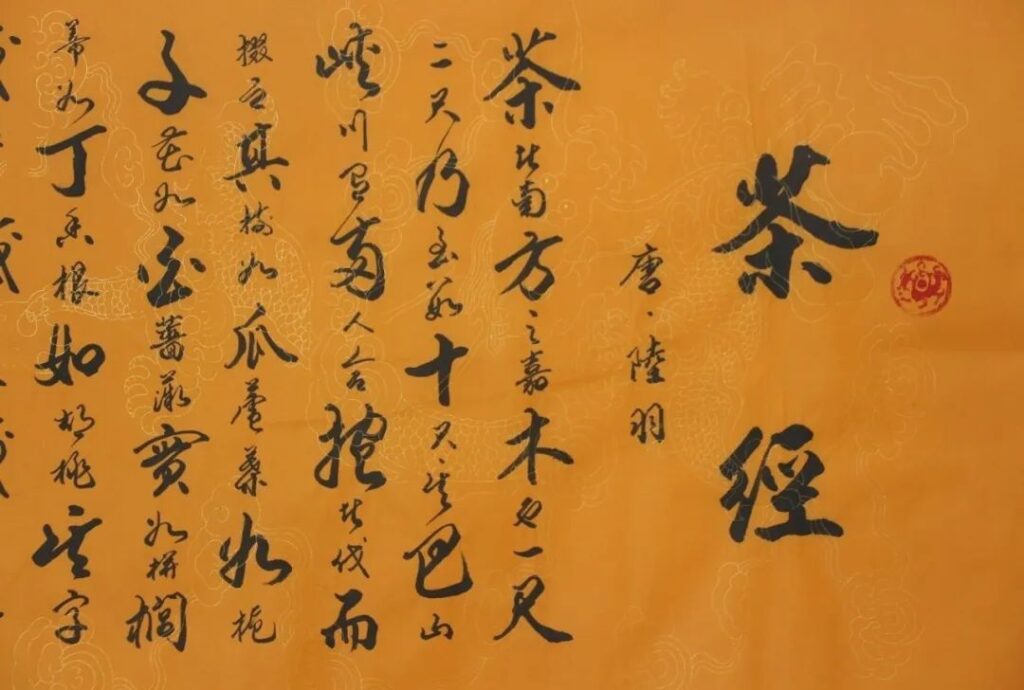Hello! Welcome to the ‘World of Tea’. A life with a touch of tea art. While delicious food is appreciated, health is the measure. Previously, we explored classic traditional cuisines across the four seasons. Today, let’s refresh our spirits and discuss ‘tea’. Experience the art of tea cultivation life, a dialogue with life itself. With tea by your side, may you live a healthier, happier, and more comfortable life in the coming year!
Understanding the Long-standing Chinese Tea Culture
Just as with melons, tea can be harvested after three years. Wild tea is superior to garden tea. On sunny cliffs and in shaded forests, the purple leaves are the best, followed by green ones; shoots are better than buds; curled leaves are superior to those that are spread out. Those from shady slopes and valleys are not worth picking, as they have a stagnant nature can and cause illness. ‘The shoots of tea grow in fertile soil among rotten rocks.
‘ Fresh tea leaves are enveloped in the misty mountains, and the origin of the character for ‘tea’ is closely tied to the initial practice of drinking tea. Initially, tea was used as a medicinal herb or food, occasionally needed by people. It might have been discovered by countless nameless ‘Shennong’ ancestors who tested it on themselves and found this ‘divine substance.’ It circulated under different names such as ‘tu’, ‘jia’, ‘she’, ‘ming’, and so on, safeguarding different ethnic groups, tribes, and nations through generations. It wasn’t until the Tang Dynasty, with the publication of Lu Yu’s ‘The Classic of Tea’, that the unified name ‘tea’ was established. The book also thoroughly explored the best growing conditions for tea plants, the optimal time for picking tea, and the methods of making and drinking tea. Once published, it was highly praised by literati. Compared to alcohol, tea has a mild nature and is invigorating and thought-provoking. ‘Wine is the lord of forgetting worries, but the more you drink, the more muddled you become; tea is the duke of sleepless nights, yet the more you drink, the more awake you become.’ As a result, many famous poets began to compose poems and essays on the theme of tea. Tea gradually became the main beverage in the gatherings and feasts of literati. The practice of drinking tea thus quickly became popular and spread throughout the country. This, in turn, led to the birth of a series of tea studies, tea ceremonies, and tea culture. Tea has since stood out, with people replacing wine with tea, and tea has gradually become an independent beverage category that can rival wine, known and pursued by people. Lu Yu is also revered as the ‘Sage of Tea.’ The evolution of the character for ‘tea’ and its interesting interpretations: The structure of the character ‘tea’ implies ‘a person among plants and trees’ or ‘a person amidst nature. ‘ This vividly and subtly conveys the harmony and integration of humans with nature, full of poetic charm and thought-provoking. The interesting interpretations of the character ‘tea’ also bestow upon it the auspicious meaning of longevity. The character for ‘tea’ has similarities with the numbers ‘twenty’, ‘eight’, and ‘eighty’, which when combined, equal 108. Therefore, ancient literati referred to people who lived to be 108 years old as ‘tea longevity elders. ‘ Over time, the character ‘tea’ came to represent longevity and also symbolizes the benefits of drinking tea for human health. Other aliases for tea include: Ye Jia, Bu Ye Hou, Di Fan Zi, Xiang Ming, Jia Ming, Qi Qiang, Long Feng Tuan, Que She, etc. The forms of tea: ‘There are coarse tea, loose tea, powdered tea, and cake tea for drinking.’ During the Tang Dynasty, the way people drank tea was mostly by boiling: first, tea bricks were crushed with a tea mill, the leaves were ground into fine powder, the tea dust was filtered with a tea sieve, and then the tea dust was put into boiling water to brew into tea soup.The emergence of the tea industry and culture since the Tang Dynasty has seen the custom of drinking tea flourish, making tea almost a necessity in every household, permeating every aspect of social life. People use tea to show respect to guests, to nourish the body, to dispel sleepiness, to relieve melancholy, to offer in Buddhist rituals, and to express their aspirations… Reading books can be accompanied by tea, playing chess can be accompanied by tea.
.. Writing poetry and painting can be enhanced by tea, inspiring creativity that leaps onto the paper… As people often say, among the seven essentials of daily life are ‘firewood, rice, oil, salt, soy sauce, vinegar, and tea’, and also ‘qin (zither), chess, calligraphy, painting, poetry, wine, and tea’, appreciated by both refined and common tastes, omnipresent, truly indispensable in a day. Such a huge demand naturally led to the vigorous development of the tea industry. By the Song Dynasty, industries related to tea, such as teahouses, tea buildings, and tea gardens, bloomed everywhere. China’s ‘tea industry map’ was roughly established during this period. The craftsmanship became more exquisite and complex. The way of drinking tea evolved from the Tang Dynasty’s grinding and boiling ‘brewing tea’ to the more labor-intensive ‘dot tea’ and ‘tea dueling’, with exquisite and luxurious variations. In the Ming Dynasty, Zhu Yuanzhang advocated for simplicity, thus ‘abolishing tea cakes and promoting loose leaf tea’. Since then, the method of making tea shifted from compressed tea represented by tea cakes to loose leaf tea. The way of brewing tea also changed from ‘dot tea’ to ‘brewing’. From the initial encounter to the obsession with tea, it has an innately vigorous vitality, never interrupted by any form of change, only becoming more brilliant. Tea, as an important commodity through the Silk Road and the Age of Discovery, developed unique flavors such as Pu-erh and black tea during its journey to foreign lands. In foreign lands, people seem to have no resistance to tea from the first encounter to obsession. When tea arrived in England, through collision and integration, it created a unique Western-style afternoon tea culture. For a time, black tea with sugar and milk, paired with exquisite tea snacks and tea sets, allowed time to blend with the aroma of tea and snacks during afternoon tea, becoming a fashionable taste of life’s enjoyment. It also commercially led to the rise and prosperity of Western tea industries. Tea, when it came to Japan, was well preserved and developed, such as Japanese tea ceremonies and matcha, which have long been renowned worldwide. The combination of Zen and tea in the cultivation of life is a union of material and spirit. The material aspect lies in the beneficial nutrients for health that tea contains, such as polyphenols, theanine, alkaloids, aromatic substances, vitamins, and minerals. On the spiritual level, it is about cleansing the body and mind with the spirit of tea and the etiquette of tea, delighting the heart and releasing one’s nature. Drinking tea and Zen meditation can be considered as one, as tea can help one to be refreshed and focused, and it is also a process of immersion and purification for both body and mind. Drinking tea is a way to use etiquette as a medium and tea as a vehicle, to reach the mysterious realm of the spiritual world from the physical senses of form, color, aroma, and taste, to comprehend the connection between humans and nature, and the harmony and tranquility between humans and their inner selves.Tea and poetry are the best ‘advertisement’ for tea.
I. The Pagoda Poem by Yuan Zhen (Tang Dynasty)
Fragrant tea leaves, tender buds.
Admired by poets, loved by monks.
Ground white jade, woven red gauze.
Kettle boils yellow petals, bowl turns dust flowers.
At night, invite the moon to accompany,
In the morning, face the morning glow.
Washing away the fatigue of ages,
After drunkenness, who can boast?
II. A Quick Note of Thanks for the New Tea by Lu Tong (Tang Dynasty)…
A bowl moistens the throat and lips,
Two bowls break the loneliness.
Three bowls search the dry intestines,
Only five thousand volumes of texts remain.
Four bowls bring a light sweat,
Dispelling life’s grievances through pores.
Five bowls cleanse the flesh and bones,
Six bowls connect to the divine.
Seven bowls are too much to bear,
Only a gentle breeze is felt under the arms.
Well, that’s a brief introduction to tea culture for today.
Stay tuned for more on tea etiquette, tea fun, and tea customs.
See you next time on our new journey!
May you be well~


